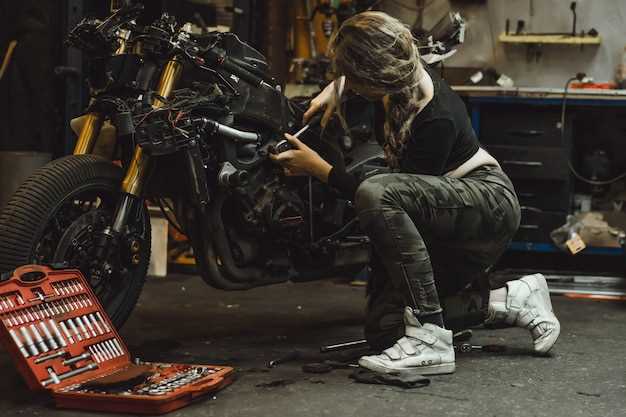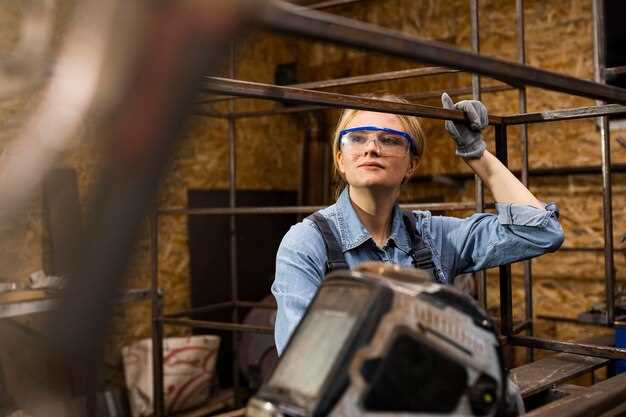
Welding motorcycle frames is a critical process that directly affects the performance, safety, and longevity of a motorcycle. Understanding the fundamentals of frame welding helps both amateur builders and professional fabricators create robust and reliable machines. This involves an awareness of the materials used, the different welding techniques available, and the best practices to achieve optimal results.
One of the primary considerations in welding motorcycle frames is the choice of material. Most motorcycle frames are constructed from steel or aluminum, each with its unique properties and challenges. Steel offers excellent strength and durability but can be heavier, while aluminum provides a lighter alternative but may require different welding techniques due to its thermal properties. Knowing how these materials behave under heat and stress is essential for ensuring structural integrity.
In addition to material selection, the welding technique used plays a vital role in the quality of the finished frame. Techniques such as MIG welding, TIG welding, and stick welding each offer distinct advantages and disadvantages depending on the project’s requirements. Understanding when to use each method can greatly influence both the aesthetic and functional characteristics of the motorcycle.
Moreover, adhering to best practices in the welding process–such as proper joint preparation, adequate fixturing, and precise control over welder settings–can significantly enhance the outcome. This article delves into the essential insights and expert tips needed to master the art of welding motorcycle frames, ensuring that builders can create safe, high-performing vehicles that stand the test of time.
Choosing the Right Welding Techniques for Various Frame Materials

Welding motorcycle frames requires a deep understanding of the materials involved, as different metals respond uniquely to welding processes. The most common materials used in motorcycle frame construction are steel, aluminum, and titanium, each demanding specific welding techniques to ensure structural integrity and performance.
For steel frames, MIG (Metal Inert Gas) welding is often preferred due to its speed and ease of use. MIG welding allows for clean, strong welds suitable for various steel grades. Another effective method is TIG (Tungsten Inert Gas) welding, which provides greater control and a higher quality finish, making it ideal for intricate designs and thinner sections. Stick welding can also be utilized, particularly for heavier gauge steel, offering durability in harsh conditions.
When working with aluminum, TIG welding is generally the best choice. This technique provides precise heat control essential for preventing warping and ensuring a strong bond. Aluminum requires proper preparation, including cleaning and the use of filler materials that match the base metal. MIG welding can also be employed, but it demands a spool gun to effectively feed the softer aluminum wire.
Titanium frames benefit from TIG welding as well, primarily due to the material’s unique properties. This method allows for a clean and controlled weld, minimizing contamination and ensuring the strength of the joint. Additionally, maintaining a high level of cleanliness before and during the welding process is crucial for titanium to avoid any defects in the weld.
In summary, selecting the appropriate welding technique is vital for the construction of motorcycle frames. Understanding the material properties and the specific requirements of each welding process will help achieve optimal results, ensuring safety and enhancing performance on the road.
Common Welding Defects and How to Prevent Them in Motorcycle Frames
Welding defects can compromise the integrity and safety of motorcycle frames, leading to catastrophic failures. Understanding common defects and implementing preventive measures is essential for quality welding.
One frequent issue is porosity, which occurs when gas is trapped in the weld material, forming small holes. This defect can be caused by contaminated base materials, improper shielding gas coverage, or excessive moisture. To prevent porosity, ensure that all surfaces are clean and dry before welding. Utilize the correct shielding gas and maintain appropriate weld parameters to minimize contamination.
Weld cracks are another critical defect. These can develop during or after the welding process due to factors such as rapid cooling, excessive heat input, or inadequate joint design. To prevent cracks, utilize preheating methods to reduce thermal stress and control the cooling rate of the weld. Additionally, ensure proper weld geometry and use compatible filler materials to match the base metal.
Undercutting refers to the erosion of the base metal along the edge of the weld, which weakens the joint. It typically results from high travel speeds or improper electrode angles. To mitigate undercutting, maintain steady travel speeds, use appropriate electrode angles, and adjust the welding parameters according to the material being welded.
Lack of fusion occurs when the weld metal does not properly bond with the base metals, leading to weak joints. This defect is often due to insufficient heat or improper welding technique. To avoid lack of fusion, ensure adequate heat input and follow the correct welding procedure. Employing a skilled welder familiar with the specific materials can also minimize this risk.
Lastly, overlap happens when the weld metal rolls over the base material without proper fusion. This defect may occur due to excessive filler material or incorrect welding speed. Prevent overlap by adjusting the filler metal feed and ensuring proper welding speed, while monitoring the bead profile during the process.
By recognizing these common defects and adopting preventive measures, welders can enhance the quality and safety of motorcycle frames, ensuring a reliable and durable finished product.
Tips for Achieving Precision and Strength in Custom Frame Design

When designing a custom motorcycle frame, precision and strength are critical factors that determine the overall performance and safety of the bike. Start by selecting high-quality materials that offer the best strength-to-weight ratio, such as chromoly steel or aluminum alloys. These materials provide durability while minimizing excess weight.
Utilize computer-aided design (CAD) software to create accurate frame models. CAD tools allow for detailed measurements and adjustments, ensuring every component fits together properly. Simulations can also help identify potential stress points, allowing for early adjustments to enhance the frame’s structural integrity.
Employ the correct welding techniques to achieve strong joints. Techniques such as TIG (Tungsten Inert Gas) welding are often preferred for their precision and ability to produce clean, strong welds. Ensuring proper penetration and avoiding overheating are crucial to prevent weakening the material.
Incorporate gussets in high-stress areas of the frame. These reinforcements distribute stress across a wider area and significantly enhance the overall strength of the frame. Carefully analyze load paths and consider adding additional supports where necessary.
Always prioritize aligning the frame correctly during the construction process. Any misalignment can lead to increased wear on components, stability issues, and ultimately a dangerous ride. Use jigs and fixtures to secure the frame in the correct position while welding.
Conduct thorough inspections and tests of the frame post-welding. This includes checking for any signs of distortion or weakness. Consider using non-destructive testing methods, such as ultrasonic or magnetic particle inspection, to ensure the integrity of the welds and the frame itself.
Ultimately, attention to detail in every phase of the design and construction process is essential for achieving precision and strength in custom motorcycle frame design. By following these guidelines, builders can create robust and reliable motorcycle frames tailored to their specific performance needs.